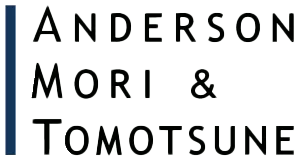On March 28, 2025, the Ministry of Internal Affairs and
Communications and the Ministry of Economy, Trade, and Industry
jointly published the "AI Guidelines for Business (Version
1.1)"1 (hereafter "Version 1.1"). These
guidelines were developed to promote the safe and secure
utilization of AI and provide a unified framework for AI
governance. Version 1.1 builds upon previous
iterations—Version 1.02 (published on April 19,
2024) and Version 1.013 (published on November 22,
2024)—and updates their consideration for the development,
provision, and utilization of AI to ensure that businesses and
other entities can appropriately use AI.
This article focuses on the key changes introduced in Version 1.1
compared to Version 1.01.
1. Main Content of Version 1.1
(1) "Preface"
The "Preface" section includes a new reference to the Global Partnership on Artificial Intelligence ("GPAI")4. GPAI is an international initiative that promotes the development and utilization of "responsible AI." In November 2022, Japan hosted the GPAI Summit and served as the chair country for one year5.
(2) "Part II: Society to aim for with AI, and matters each AI business actor works on"
Part II contains updates on the following key points:
- Human-Centric Approach:
- It is essential to provide training that fosters an understanding of the characteristics of AI, including its limitations, as well as the need for human evaluation of AI-generated decisions.
- From the perspective of sustainability, it is necessary to adopt measures such as optimizing models and appropriately utilizing different models based on specific purposes.
- Safety:
- From the perspective of proper utilization, particularly in the case of multimodal generative AI, it is important to clearly highlight risks such as the dissemination of misinformation, biases, or potential infringements of intellectual property rights, and to ensure the involvement of human judgment in all AI-related decisions.
- From the perspective of AI training, care must be taken to exclude illegal content from training datasets, such as by the use of reproductions that infringe on the rights of the IP-holders.
- Fairness:
- It is necessary to examine the potential for unintended or undetected biases in AI systems.
- Measures must be taken to ensure that human judgment involved in the process are not influenced by biases.
- Accountability:
- It is desirable to respond appropriately, to the extent necessary and reasonable, to inquiries and requests for information disclosure, particularly from IP right-holders in the training data, or from individuals adversely affected by AI evaluations, decisions, recommendations, or predictions.
- It is necessary to follow appropriate procedures in accordance with court orders for the disclosure of obligations.
(3) "Part III: Matters Related to AI Developers"
Part III includes updates on the following key points:
- Bias Mitigation in Data Preprocessing and
Learning:
- The concept of "unfair bias" has been specifically defined as "biases that cause unreasonable disadvantages to particular individuals or groups and cannot be reasonably justified".
- Additional Provisions under the "Hiroshima Process
International Code of Conduct for Organizations Developing Advanced
AI Systems" ("Code of Conduct"):
- A "reporting framework" under which AI developers voluntarily assess and report their own compliance with the Code of Conduct has been in operation since February 2025.
- AI developers engaged in the development of advanced AI systems, following the Code of Conduct, are expected to participate in the reporting framework.
2. Appendix Version 1.16
(1) "AI's benefits and risks"
The appendix highlights the following points:
- The emergence of multimodal generative AI expands the scope of AI applications and enhances processing capabilities in the performance of general tasks, such as by improving inference and analysis capabilities that extend beyond mere generation.
- There is growing concern surrounding the use of Retrieval-Augmented Generation (RAG), particularly in mitigating hallucinations and enhancing transparency, by clarifying sources and reasoning processes, reducing costs by eliminating the need for model retraining, and more.
- The use of generative AI for program code generation is expected to enable low-cost and rapid code creation, minimize human errors, and reduce the need for advanced programming skills and knowledge.
- The emergence of AI agents is generating expectations for significant improvements in efficiency, automation, and overall productivity.
The appendix furthermore categorizes the risks associated with AI into the following groups, along with measures for addressing them to be taken by AI developers, providers, and users:
- Technical Risks (Unique to AI Systems):
- Risks during training and input stages, such as in the context of attacks directed at AI systems.
- Risks during output stages, such as biased outputs or hallucinations leading to incorrect results.
- Risks during post-deployment stages, such as black-box characteristics or insufficient explanations for decisions.
- Societal Risks (Existing Risks Manifesting or Amplified
by AI):
- Ethical and legal risks, including improper handling of personal information, over-reliance on AI, and misuse.
- Economic risks, such as intellectual property infringement, financial losses, and leakage of confidential information.
- Risks to the information environment at large, including the spread of misinformation or disinformation, adverse impacts on democracy, and the loss of diversity and inclusiveness.
- Environmental risks, including increases in energy consumption and environmental impact.
(2) Appendix 6: Major precautions for referring to "Contract Guidelines on Utilization of AI and Data"
The "Contract Guidelines on Utilization of AI and Data"7, which were initially formulated and published in June 2018, include updates reflecting changes in circumstances since their publication. Specifically, the guidelines address:
- The diversification of contract models related to the utilization and development of AI.
- The allocation of risks within complex value chains.
- The delineation of responsibilities and accountability among stakeholders.
3. Practical Implications
As outlined above, the AI Guidelines for Business have been updated to address the rapid changes surrounding AI. Regular revisions are expected in the future, making it essential to stay informed about the latest developments.
Footnotes
1. https://www.meti.go.jp/shingikai/mono_info_service/ai_shakai_jisso/pdf/20250328_1.pdf
(In Japanese)
https://www.meti.go.jp/shingikai/mono_info_service/ai_shakai_jisso/pdf/20240419_14.pdf
(The English version (provisional translation) published with the
original text.)
2. https://www.meti.go.jp/shingikai/mono_info_service/ai_shakai_jisso/pdf/20240419_1.pdf
(In Japanese)
https://www.meti.go.jp/shingikai/mono_info_service/ai_shakai_jisso/pdf/20240419_9.pdf
(The English version (provisional translation) published with the
original text.)
3. https://www.meti.go.jp/shingikai/mono_info_service/ai_shakai_jisso/pdf/20241122_1.pdf
(In Japanese)
https://www.meti.go.jp/shingikai/mono_info_service/ai_shakai_jisso/pdf/20241226_1.pdf
(The English version (provisional translation) published with the
original text.)
5. https://www.soumu.go.jp/menu_news/s-news/01tsushin06_02000259.html (In Japanese)
6. https://www.meti.go.jp/shingikai/mono_info_service/ai_shakai_jisso/pdf/20250328_3.pdf
(In Japanese)
https://www.meti.go.jp/shingikai/mono_info_service/ai_shakai_jisso/pdf/20240419_16.pdf
(The English version (provisional translation) published with the
original text.)
7. https://www.meti.go.jp/press/2024/02/20250218003/20250218003.html (In Japanese)
The content of this article is intended to provide a general guide to the subject matter. Specialist advice should be sought about your specific circumstances.




